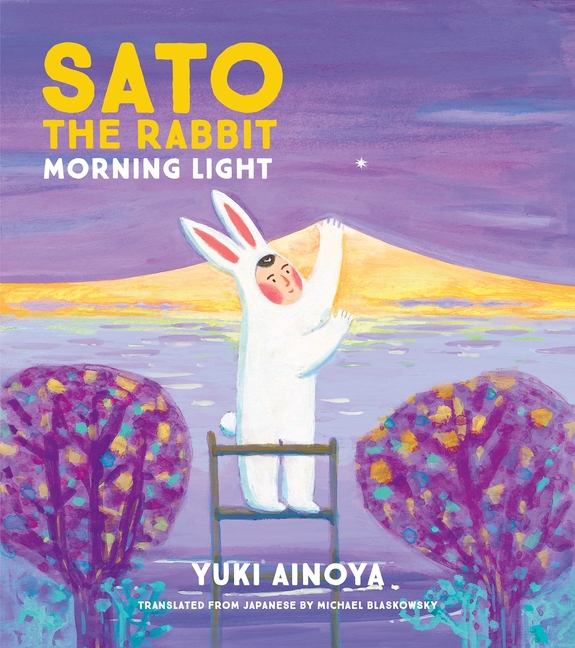local_shipping Free Standard Shipping on all orders $25+ and use Coupon Code GiftBooks15 for an additional 15% off!
Sato the Rabbit
(Sato the Rabbit #1)

In this surreal collection of short vignettes, we are transported to the world of Sato the Rabbit: a world very much like our own, yet one that is imbued with an added dimension of wonder and curiosity, in which ordinary objects and everyday routines become magical encounters.
"One day, Haneru Sato became a rabbit. He's been a rabbit ever since." With these surrealist, yet matter-of-fact opening lines, we are transported to a world very much like our own, yet one that is imbued with an added dimension of wonder and curiosity. In Sato's world, ordinary objects and everyday routines can lead to magical encounters: a rain puddle, reflecting the sky, becomes a window that can be opened and peered through. A walnut is cracked open to reveal a tiny home, complete with a bathtub and a comfy bed. During a meteor shower, Sato catches stars in a net, illuminating the path home for a family taking an evening walk.
This whimsical tale is the first in a trilogy from Japan.
JUV002210 - Juvenile Fiction | Animals | Rabbits
JUV051000 - Juvenile Fiction | Imagination & Play
JUV038000 - Juvenile Fiction | Short Stories
Nature
Metamorphosis
Kirkus
Sweet, surreal, and contemplative.
Publishers Weekly
"One day," creator Ainoya begins, "Haneru Sato became a rabbit. He's been a rabbit ever since." He looks very much like a child in a rabbit costume, and he walks upright through a natural world reminiscent of the Chirri & Chirra series--one that offers enchanting and sometimes droll revelations. He waters his garden, and a spread traces the water along a twisting, turning course through the forest back to its source, a pond that, in Blaskowsky's natural-sounding translation, "is blowing water into the hose as hard as it can." Next, Sato washes laundry in a green field, hanging up white shapes "piece by piece" against the blue sky. As clouds scud through, the laundry soon begins to resemble them, and, holding the ends of a sheet, Sato "becomes a ship and sets sail through rippling waves of grass." In subsequent sections, Sato captures shooting stars, takes a voyage in a watermelon he's eating, finds tiny worlds inside walnuts, and drinks cold tea with ice "made from/ water containing all the events/ of spring, summer, and fall." Each episode is over in a few pages, and every one offers kaleidoscopic, pleasingly sensorial images made for dreaming on. Ages 6-9. (Feb.)
Copyright 2020 Publishers Weekly, LLC Used with permission.A Seattle native with a life-long connection to Japan, Michael Blaskowsky spent seven years living on the Japanese island of Hokkaido after graduating from Eastern Washington University. His translations cover a wide range of topics, with a focus on literature, the arts, gaming, and the sciences.






